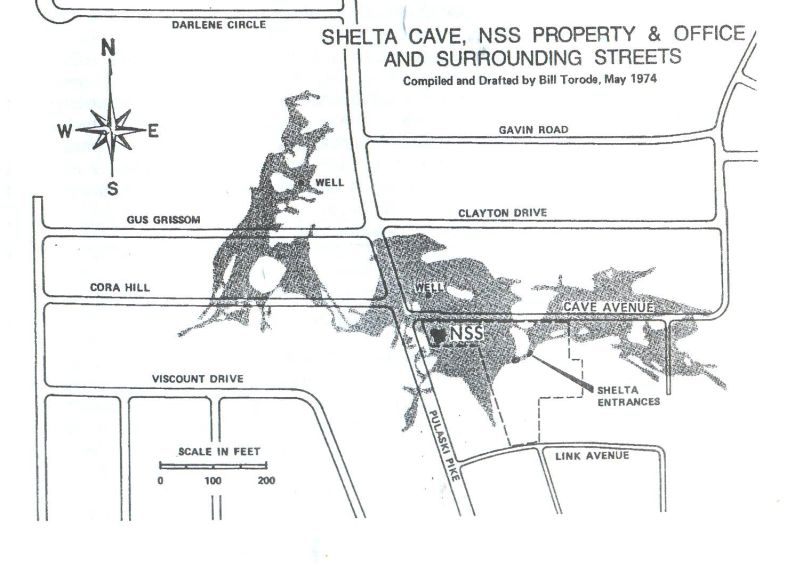CULVER, DAVID C.:
Department of Biology, American University Washington DC - USA
A biológiai erőforrások kezelésének története a Shelta-barlangban, Alabama USA
A history of the management of biological resources of Shelta Cave, Alabama USA
A Huntsville városában (Alabama, USA) található Shelta-barlangban több mint 20 felszín alatti faj él, köztük az amerikai Hal- és Vad-Hatóság által veszélyeztetettnek nyilvánított alabamai barlangi rák, három folyami rák faj és egy hallaj. Az Egyesült Államokban csupán két másik felszín alatti helyen (Mammoth-barlang Nemzeti Park és egy artézi forrás San Marcos-nál Texasban) található ennyi fai, és a világon is csak néhány hasonló faunagazdagságú felszín alatti élőhely ismert. Az l890-es években a barlangot megnyitották az idegenforgalom számára és fa padlózatot helyeztek el. A barlang csupán néhány évig üzemelt, mivel a benne található tó időszakosan kiszáradt. A National Speleological Society, NSS (Nemzeti Barlangkutató Társulat) anyagi támogatásával a Shelta-barlang Természetvédelmi Egyesülete 1967-ben védelem alá helyezte a barlangot és annak faunáját, amelyet az egyre növekvő Huntsville városa mind jobban veszélyeztetett. A bejárathoz tartozó földterületet megvásárolták és az jelenleg az NSS irodájának ad otthont, Napjainkban a barlang 25 hektáros erdős terület alatt fekszik, amelyet beépített környezet vesz körbe. A barlang három nagy teremből áll, amelyet időszakosan elönt az ismeretlen eredetű felszín alatti víz. Két 10m-nél rövidebb kürtő köti össze a barlangot a felszínnel.
Miután az NSS megvette a területet, a bejáratot ajtóval lezárták, amely sajnálatos módon megakadályozta a több száz barlangban lakó szürke denevér szabad közlekedését. A barlangból a denevér populáció kipusztult. A fokozódó urbanizáció hozzájárult a barlangi élővilág hanyatlásához. A vízben nőtt a nitrát-tartalom és egyes esetekben mérhető értéket értek el egyes vegyszeres gyomirtó-szerek, mint például az atracin. A felszín alatti élőlények populációja rohamosan csökkent A barlangi rák az 1980-as évekre eltűnt és a folyami rákok száma az eredeti 5%-ára csökkent a 60-as évek végére. Míg kézenfekvő az urbanizációt vádolni a felszín alatti élővilág e katasztrofális kipusztulásáért, a nem megfelelő kezelési stratégia legalább ugyanilyen mértékben felelőssé tehető. A denevérpopuláció kipusztulásának következménye volt az egyéb fajok hanyatlása, ezt súlyosbította, hogy a bejárati ajtók, mint csapdák, felfogtak minden szervesanyag-beáramlást a barlangba. Egy új "denevér-barát" ajtó felszerelése már nem segített, a denevérek nem tértek vissza. Az. ideális biológiai megoldást jelentő megoldás, az ajtó végleges eltávolítása és helyette védőkerítések felszerelése jogi problémák miatt nem kivitelezhető.
Shelta Cave, located in the city of Huntsville, Alabama (USA) has more than 20 species of obligate subterranean organisms, including the Alabama cave shrimp. listed as federally endangered by the U. S. Fish and Wlldlife Service, three species of crayfish, and one fish. Only two other subterranean sites in the United States (Mammoth Cave National Park and the artesían sprinqs at San Marcos, Texas) have this many species, and only a handful of sites worldwide have this many species. In the 1890's the cave was commercialized, and a wooden dance floor installed. The commercialization only lasted several years, in part because the lake in the cave periodically dried up.
With the help of The Nature Conservancy, Shelta Cave was purchased by The National Speleological Society in 1967 to protect the cave and its fauna from development pressures in the rapidly expanding city of Huntsville. The land adjoining the entrance was purchased and used as the headquarters of the National Speleological Society. Today the cave is in a wooded site of less than 25 hectares surrounded by urban development. The cave consists of three large rooms periodically flooded by groundwater, the origin of which is unknown. Two short ( <10m) vertical shafts connect the cave to the surface.
After purchase by the National Speleological Society, gates were installed at the entrances, which unfortunately prevented access by the resident population of at least several hundred gray hats. The bat population in the cave disappeared. Increased urbanization in the area has contributed to a decline by the quality of water in the cave with increased levels of nitrate, and occasional detectable levels of herbicides such as atrazine. The obligate subterranean populations have declined precipitously. Shrimp had disappeared by the 1980's and crayfish were less than 5% of their levels in the late 1960's.
While it is tempting to blame this catastrophic decline in subterranean life on the effects of urbanization, it is much more likely that the management efforts themselves were largely responsible. The lass of the bat population meant that the resource base for the obligate subterranean species declined, and this was further exacerbated by the fact that the gates acted as detritus traps and prevented some organic matter from entering the cave. Installation of a "bat-friendly" gate had no effect-the bats did not return. Removal of the gate, which is the ideal biological solution and the installation of a protective fence around the site has proved impossible to implement due to liability concerns.

